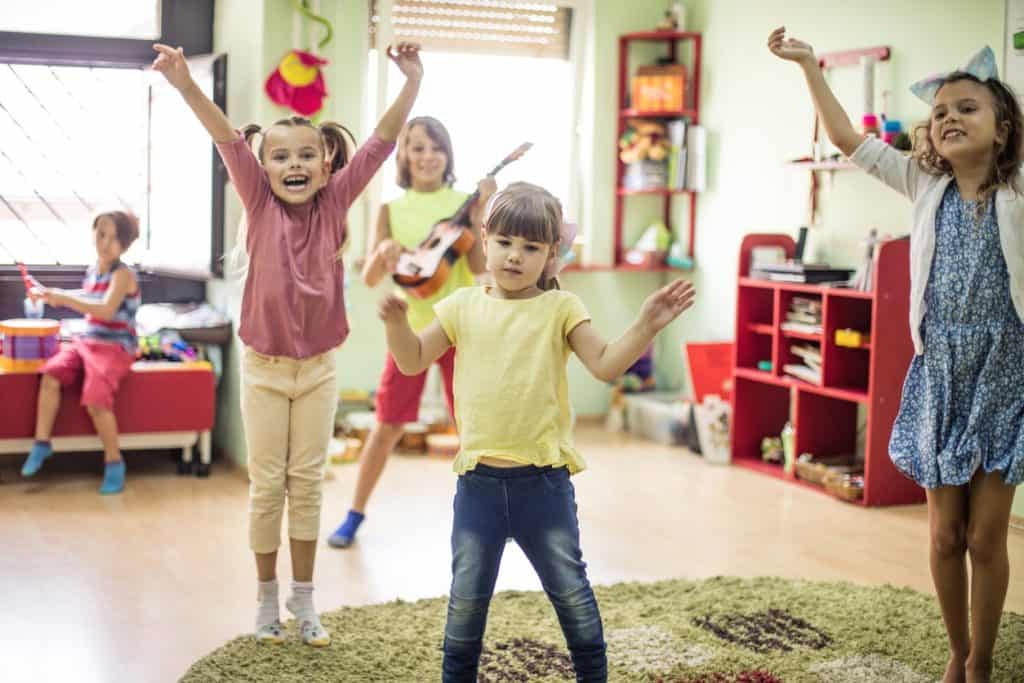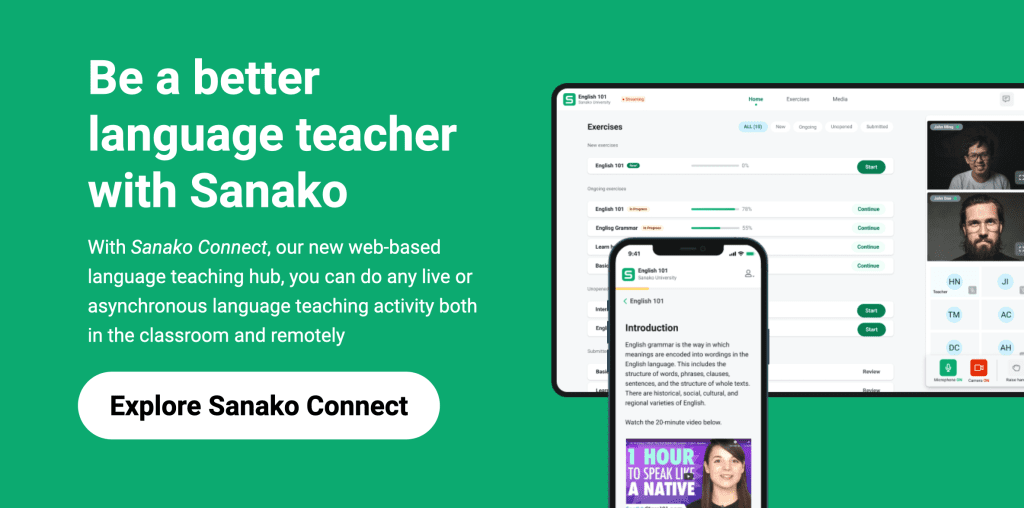Language learning can be challenging, but that doesn’t mean it has to be boring or tedious! One of the most popular ways to make the experience more enjoyable is to use a variety of different language teaching approaches.
One common approach is Total Physical Response (TPR). This innovative and interactive style sees the mind and body work together to enhance language acquisition. In this blog post, we will explore the principles of TPR and its numerous benefits for language education.
What is Total Physical Response (TPR)?
Total Physical Response is a language teaching approach that relies on the coordination of language and physical movement. It was developed by American psychologist James Asher in the 1970s.
The main concept behind TPR is that learners respond physically to L2 commands issued by the educator. For example, the teacher might say, “Stand up,” and the students respond by standing up. This process engages the body, creating a connection between the spoken language and the corresponding action.
Advocates argue that by listening to the target language and converting it to action, speaking will eventually manifest itself. This form of motor activity encourages right-brain learning and long-term storage, in a process somewhat akin to learning to ride a bicycle.
TPR is particularly useful for, but not limited to, teaching beginners and/or younger students and is highly effective for teaching imperative-based languages, where the commands are easily expressed through actions.
What are the core principles of TPR?
The TPR strategy is highly flexible and can be used in a variety of different ways in the language classroom. Teachers can deploy it to help students learn new vocabulary, to demonstrate comprehension of words, phrases and sentences, to show their understanding of a sequence of sentences, or even the progression of events in a story.
Whatever the learning objective, there are some common characteristics that help to define the approach.
Firstly, TPR emphasises language comprehension before production. Learners first internalise the L2 by responding physically to commands without having to produce any spoken language themselves. This reduces anxiety and allows them to acquire the language more naturally.
TPR also relies on repetition to reinforce language learning. By repeatedly performing actions in response to commands, learners strengthen their memory and their understanding of the vocabulary and grammar structures.
Importantly TPR creates a low-anxiety environment in which learners don’t feel pressured to speak immediately. Instead, they feel comfortable and confident, gradually building their language skills before engaging in oral production.
Finally, this multi-sensory style of learning is characterised by high-levels of teacher engagement. Educators should always model any movements and be sure to encourage shy students who might not immediately engage. The approach also requires detailed pre-class preparation, so that students receive clear instruction on what they are supposed to do and why.
Pros and cons of the TPR language teaching approach
As with any language teaching approach, TPR won’t be 100% appropriate or effective with all classes and all students. So it’s worth understanding some of the advantages and disadvantages of the style, so that you can judge when to deploy it most effectively.
Advantages:
- TPR engages multiple senses by combining physical movement with language learning. This multi-modal approach improves memory retention, making it easier for students to recall vocabulary and grammar structures.
- Students are physically involved in the lessons, which keeps them engaged and motivated throughout the class.
- It can be easily adapted for a wide range of language learning contexts and situations.
- TPR simulates the way children acquire their first language. It immerses learners in a context where language is used for communication, helping them develop their language skills organically.
- The interactive nature of TPR makes language learning enjoyable. Students often see TPR activities as games, which contributes to a positive classroom atmosphere.
Disadvantages:
- For languages with complex grammar or abstract concepts, TPR may not cover all aspects of language learning adequately.
- While comprehension is essential, some students may feel reluctant to transition from comprehending language to actively producing it. As a result, TPR might delay oral communication skill development.
- TPR activities tend to be relatively simple, focusing on basic commands and actions. This simplicity might not challenge more advanced learners who need to expand their vocabulary and language usage.
- The TPR approach is primarily focused on oral and physical language acquisition. As a result, it may not develop students’ writing skills as extensively as other language teaching approaches. Critics go further, arguing that students get too accustomed to “playing” and then do poorly when faced with more rigorous forms of assessment.
Implementing Total Physical Response techniques in your language class
If you’ve decided to try out the TPR approach, here are some hints and tips to support your teaching practice.
The best place to start is to teach a set of simple commands and their corresponding actions in the target language. For example, instructions like “stand up,” “sit down,” “turn around,” and actions like clapping, pointing or raising hands. Take the lead by demonstrating each command and encourage students to follow along.
As students’ language development speeds up, try introducing more complex vocabulary and grammar structures. For instance, move from single words to simple sentences, such as “Pick up the book” or “Open the window.” Furthermore, as learners become more confident and comfortable, gradually transition from physical responses to spoken production. Allow them to also initiate commands and act as instructors themselves.
Students’ understanding and retention can be significantly improved by using visual aids and expressions / gestures. Flashcards or printed images can be easily produced to represent the commands – they should be accompanied by a clear and expressive gesture, which helps students to remember and associate the words with the movements.
Another great way to maximise engagement is to incorporate music and rhymes into your TPR activities. Singing or chanting commands always makes the learning experience more fun and memorable. Similarly, games like Simon Says can have a positive effect by adding an element of competition and excitement to the learning process.
Whatever approach you take, contextualising the language in real-life situations reinforces its practical application. For instance, why not act out a scene at a restaurant where students play the roles of customers and waiters, using TPR to order food or serve dishes?
Finally, while TPR is an excellent tool for initial language acquisition, it should usually be complemented with other language teaching methods as students advance. Try integrating TPR with speaking, reading, and writing exercises to promote a well-rounded language learning experience. And, as always with a new teaching approach, Sanako’s recommendation is to test and try it in your setting and then tailor it to your specific circumstances.
In conclusion, TPR is a versatile and effective language teaching approach that can benefit students of all ages and proficiency levels. By incorporating gestures, actions and real-life scenarios into their practice, teachers can create engaging and enjoyable language lessons that both promote comprehension / retention and bring some joy to language learning.
Sanako is the global-leader in teacher-led language instruction technology. Our software supports language teachers to deliver inspiring and effective lessons. If you’d like to find out more about how Sanako’s dedicated language teaching software could transform your approach to language teaching, click here or the banner below to learn more!

